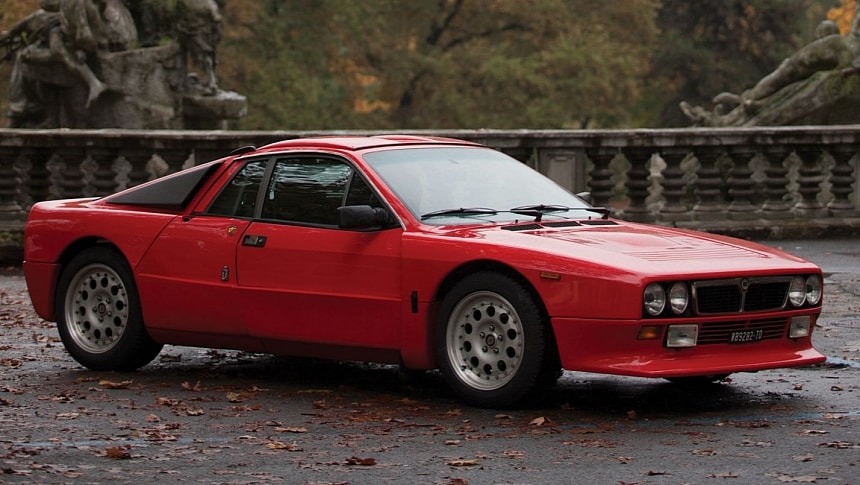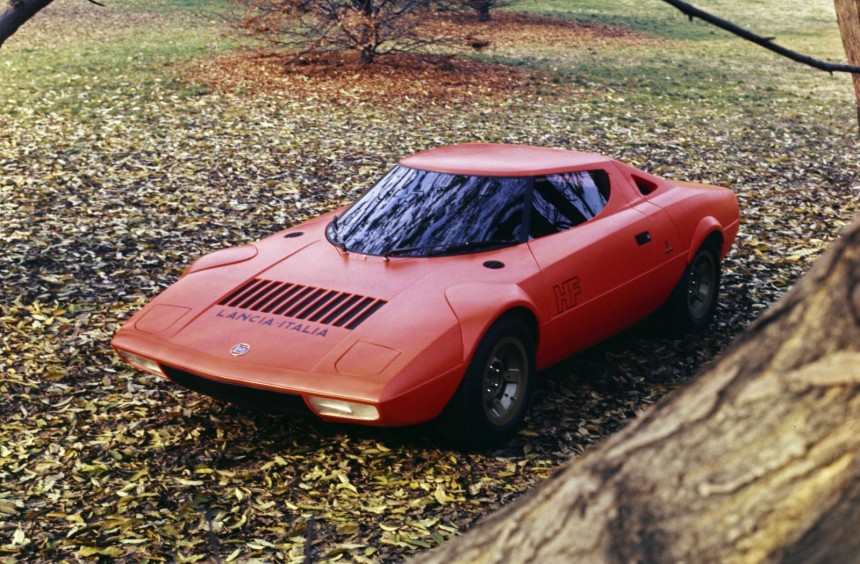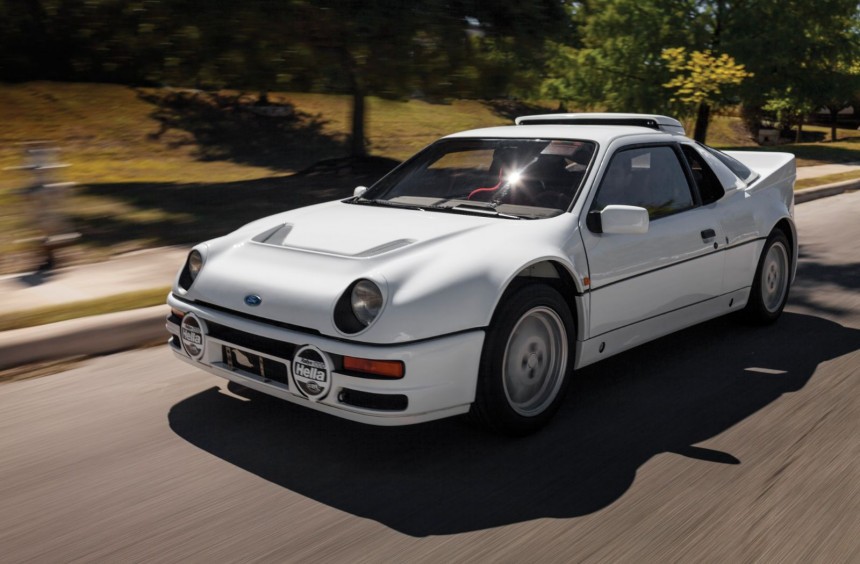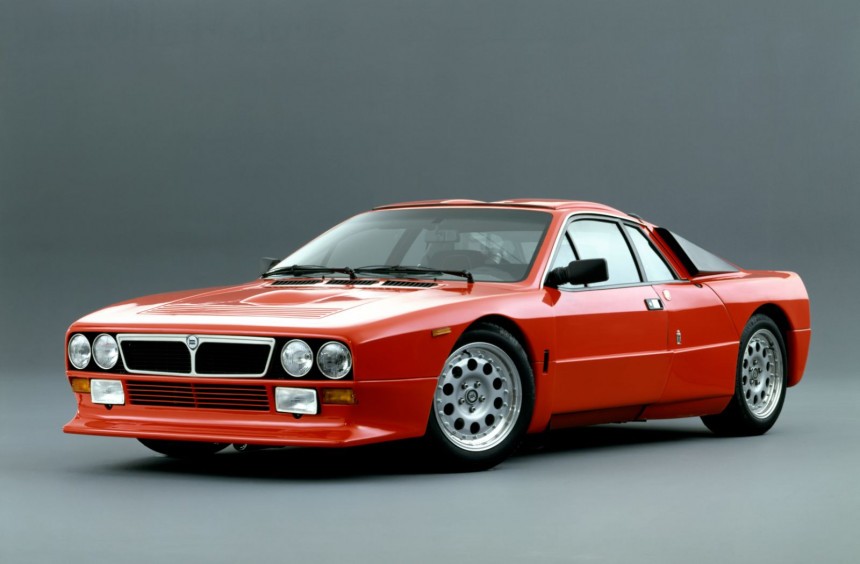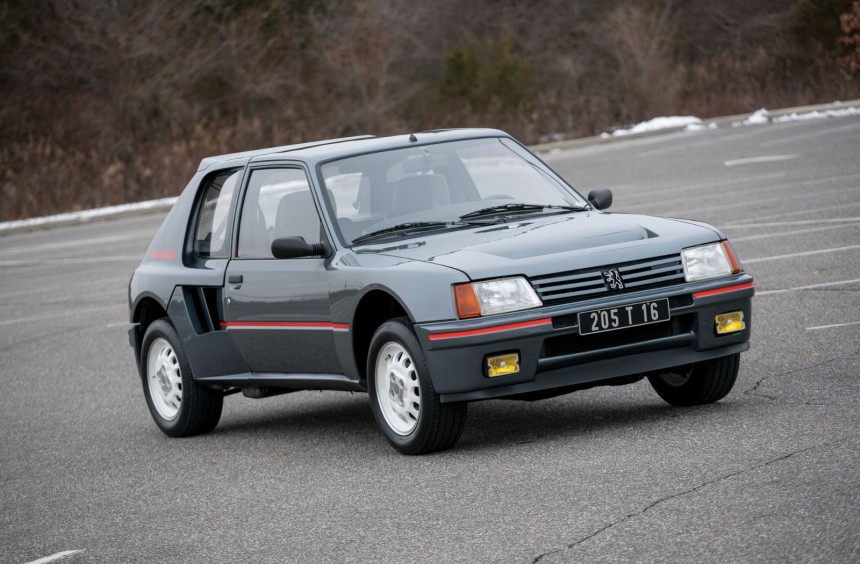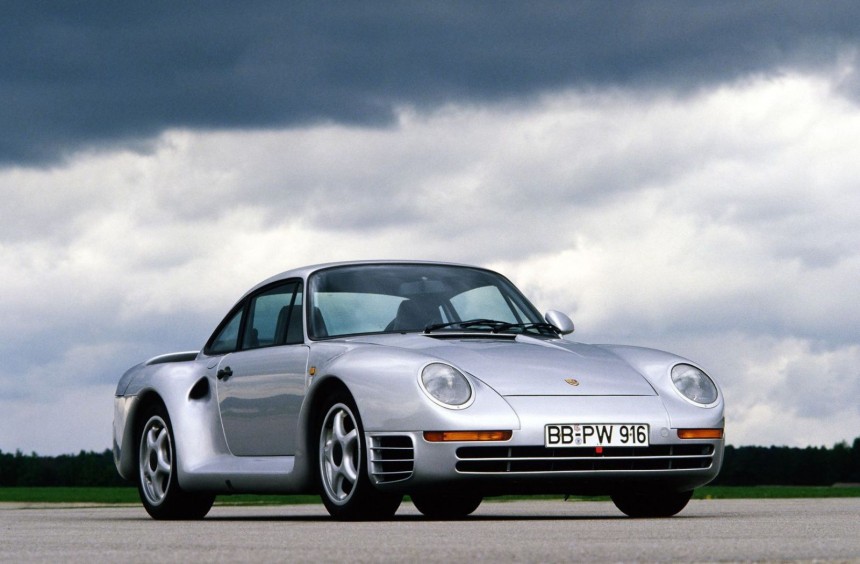During the decades when competition cars had to be based on road-legal models, the world of rallying gave birth to some epic homologation specials, and in this article, we'll remember five of the wildest.
Though not the most popular form of motorsport on the planet, rallying is arguably the most exciting.
While it encompasses a wide range of competitions and disciplines, the most well-known is the World Rally Championship (WRC), in which drivers and their machines must run against the clock on surfaces ranging from gravel and tarmac to snow and ice.
Since its debut in 1973, the WRC witnessed the birth of some wild machines that were also available to the public in street-legal guise.
In the early days, mass-produced models were modified for rallying, but manufacturers soon took it to another level by developing wild machines specifically for the competition and then adapting them for public roads.
This strategy made the WRC far more exciting and delivered some of the wildest homologation specials ever produced.
Unlike today, when the brand has nothing to do with motorsport, during the 1960s and 1970s, Lancia was heavily involved in rallying.
With the aging Fulvia HF showing its limits during the 1970 and 1971 seasons, the Italian manufacturer decided to build an all-new replacement, targeting the crown of the upcoming WRC.
Called Stratos after the Bertone concept that inspired it, the futuristic, wedge-shaped two-seater introduced in 1972 became an instant hit.
Built around a spaceframe chassis, the 2,161-pound (980 kg) Marcello Gandini-designed street version (Stradale) was powered by a 190-hp mid-mounted Dino V6 borrowed from Fiat siblings Ferrari.
The lighter, more powerful rally version became extremely successful, bringing Lancia three consecutive WRC titles (1974-1976), a Targa Florio triumph (1974), and five trophies in the Tour de France Automobile.
Produced from 1973 to 1978 in around 490 units, the Stratos was one of the most successful rally cars of its era and continues to be one of the most iconic sports cars ever.
By the mid-1970s, Ford had won nearly every important motorsport competition on the planet, but a WRC title was missing from its trophy case.
After several unsuccessful attempts, the Blue Oval finally grabbed the coveted rally title in 1979 with its Ford Escort RS1800. Still, the company didn't stop there and began developing a new car that could repeat the feat.
That car should've become the RS 1700T, but an issue-riddled development process led to the project's abandonment in 1983.
Left without a Group B challenger, Ford's European division went back to the drawing board and created a whole new car from scratch.
Dubbed RS200, the new Group B challenger abandoned the Escort-based recipe for an all-new chassis with twin shocks on all four corners, four-wheel-drive, and a mid-mounted Cosworth turbocharged straight-four, all covered by a lightweight fiberglass body.
In street-legal guise, the RS200's four-cylinder was rated at 237 hp, with available upgrade kits boosting power to 300 hp. Still, even with the stock 237-hp version, the mid-engine beast could sprint to 60 mph (97 kph) from a standstill in 5 seconds and reach a top speed of 142 mph (229 kph).
Produced in around 200 road-going units from 1984 to 1986, the RS2000 ultimately failed in the WRC and was discontinued after only two accident-riddled seasons.
Nevertheless, it remains one of the craziest Ford models ever unleashed on public roads and one of the wildest rally-bred homologation specials.
After retiring the legendary Stratos, Lancia began work on a worthy successor, but this time, they opted to partner up with Pininfarina instead of Bertone.
The result of the collaboration was officially dubbed "Rally," but the car became known as Rally 037 or, in street-legal guise, 037 Stradale.
While it loosely resembled the mass-produced Delta, the 037 was an all-new bespoke design. It featured a custom chassis, and most of its body panels were fabricated using Kevlar for the best combination of strength and weight.
Though it continued to be an RWD, mid-engine weapon, the 037 didn't feature a Ferrari engine. Instead, Lancia opted for an Abarth-developed supercharged DOHC straight-four.
Displacing 2.0 liters and spitting out 205 hp (in road-legal spec), the engine propelled the 2,579-pound (1,170 kg) Stradale from 0 to 62 mph (100 kph) in 5.8 seconds.
Just 217 units of the 037s were built between 1982 and 1984, of which 207 were road-going examples.
During its short career, the 037 didn't repeat the success of its predecessor. Nevertheless, it won the 1983 WRC manufacturer title, becoming the last RWD rally car to win a trophy in the competition.
In the early 1980s, the French manufacturer set out to dominate the WRC's highly-contested Group B, and to do that, its engineers partnered with coachbuilder Heuliez to develop what is still the wildest production car ever to don Peugeot badges.
Although it used the 205 model designation and resembled the FWD econocar, the Turbo 16 (or T16, for short) was an entirely different car.
Like the Renault 5 Turbo, which debuted several years earlier, the T16 was a mid-engine two-seater built around a custom monocoque chassis.
Built from 1984 to 1986 in approximately 200 examples (the minimum requirement for Group B homologation), the road-going T16 was powered by a DOHC 16-valve turbocharged four-cylinder rated at 197.
It also featured a permanent 4WD system, as well as the same chassis and body upgrades found on the competition cars.
In rally spec, the turbocharged engine could produce over 500 hp, and coupled with the highly capable 4WD system, it helped Peugeot grab two consecutive WRC titles in 1985 and 1986
Like Ford, Porsche wanted to add a WRC title to its impressive trophy collection, so in the early 1980s, it began developing a 911-based rally car.
Headed by talented engineer Helmuth Bott, the Group B project started with several prototypes and an all-new, highly-sophisticated 4WD system dubbed PSK (Porsche-Steuer Kupplung).
The first 4WD prototypes of the new model, now designated 959, were finished in 1983. However, 200 road-going versions had to be built to gain Group B homologation, and Porsche was far from ready to meet that requirement.
In the years that followed, the team refined the 959, and a production version was ready in 1986, but by that time, WRC decided to cancel Group B.
Nevertheless, the 959 succeeded in rally raid, winning the famed Paris-Dakar Rally in 1986.
Powered by a 444 hp 2.8-liter twin-turbocharged flat-six, the road-legal 959 could achieve a top speed of 197 mph (317 kph), making it the fastest production car in the world back in 1986.
Built from 1986 to 1993, the 959 in a little over 300 examples, the 959 remains one of the greatest road cars ever produced by Porsche, and with an average value of well over $1.5 million, it's also one of the most sought-after.
While it encompasses a wide range of competitions and disciplines, the most well-known is the World Rally Championship (WRC), in which drivers and their machines must run against the clock on surfaces ranging from gravel and tarmac to snow and ice.
Since its debut in 1973, the WRC witnessed the birth of some wild machines that were also available to the public in street-legal guise.
In the early days, mass-produced models were modified for rallying, but manufacturers soon took it to another level by developing wild machines specifically for the competition and then adapting them for public roads.
This strategy made the WRC far more exciting and delivered some of the wildest homologation specials ever produced.
Lancia Stratos
With the aging Fulvia HF showing its limits during the 1970 and 1971 seasons, the Italian manufacturer decided to build an all-new replacement, targeting the crown of the upcoming WRC.
Called Stratos after the Bertone concept that inspired it, the futuristic, wedge-shaped two-seater introduced in 1972 became an instant hit.
Built around a spaceframe chassis, the 2,161-pound (980 kg) Marcello Gandini-designed street version (Stradale) was powered by a 190-hp mid-mounted Dino V6 borrowed from Fiat siblings Ferrari.
The lighter, more powerful rally version became extremely successful, bringing Lancia three consecutive WRC titles (1974-1976), a Targa Florio triumph (1974), and five trophies in the Tour de France Automobile.
Produced from 1973 to 1978 in around 490 units, the Stratos was one of the most successful rally cars of its era and continues to be one of the most iconic sports cars ever.
Ford RS200
After several unsuccessful attempts, the Blue Oval finally grabbed the coveted rally title in 1979 with its Ford Escort RS1800. Still, the company didn't stop there and began developing a new car that could repeat the feat.
That car should've become the RS 1700T, but an issue-riddled development process led to the project's abandonment in 1983.
Left without a Group B challenger, Ford's European division went back to the drawing board and created a whole new car from scratch.
Dubbed RS200, the new Group B challenger abandoned the Escort-based recipe for an all-new chassis with twin shocks on all four corners, four-wheel-drive, and a mid-mounted Cosworth turbocharged straight-four, all covered by a lightweight fiberglass body.
In street-legal guise, the RS200's four-cylinder was rated at 237 hp, with available upgrade kits boosting power to 300 hp. Still, even with the stock 237-hp version, the mid-engine beast could sprint to 60 mph (97 kph) from a standstill in 5 seconds and reach a top speed of 142 mph (229 kph).
Produced in around 200 road-going units from 1984 to 1986, the RS2000 ultimately failed in the WRC and was discontinued after only two accident-riddled seasons.
Nevertheless, it remains one of the craziest Ford models ever unleashed on public roads and one of the wildest rally-bred homologation specials.
Lancia 037 Stradale
The result of the collaboration was officially dubbed "Rally," but the car became known as Rally 037 or, in street-legal guise, 037 Stradale.
While it loosely resembled the mass-produced Delta, the 037 was an all-new bespoke design. It featured a custom chassis, and most of its body panels were fabricated using Kevlar for the best combination of strength and weight.
Though it continued to be an RWD, mid-engine weapon, the 037 didn't feature a Ferrari engine. Instead, Lancia opted for an Abarth-developed supercharged DOHC straight-four.
Displacing 2.0 liters and spitting out 205 hp (in road-legal spec), the engine propelled the 2,579-pound (1,170 kg) Stradale from 0 to 62 mph (100 kph) in 5.8 seconds.
Just 217 units of the 037s were built between 1982 and 1984, of which 207 were road-going examples.
During its short career, the 037 didn't repeat the success of its predecessor. Nevertheless, it won the 1983 WRC manufacturer title, becoming the last RWD rally car to win a trophy in the competition.
Peugeot 205 T16
Although it used the 205 model designation and resembled the FWD econocar, the Turbo 16 (or T16, for short) was an entirely different car.
Like the Renault 5 Turbo, which debuted several years earlier, the T16 was a mid-engine two-seater built around a custom monocoque chassis.
Built from 1984 to 1986 in approximately 200 examples (the minimum requirement for Group B homologation), the road-going T16 was powered by a DOHC 16-valve turbocharged four-cylinder rated at 197.
It also featured a permanent 4WD system, as well as the same chassis and body upgrades found on the competition cars.
In rally spec, the turbocharged engine could produce over 500 hp, and coupled with the highly capable 4WD system, it helped Peugeot grab two consecutive WRC titles in 1985 and 1986
Porsche 959
Headed by talented engineer Helmuth Bott, the Group B project started with several prototypes and an all-new, highly-sophisticated 4WD system dubbed PSK (Porsche-Steuer Kupplung).
The first 4WD prototypes of the new model, now designated 959, were finished in 1983. However, 200 road-going versions had to be built to gain Group B homologation, and Porsche was far from ready to meet that requirement.
In the years that followed, the team refined the 959, and a production version was ready in 1986, but by that time, WRC decided to cancel Group B.
Nevertheless, the 959 succeeded in rally raid, winning the famed Paris-Dakar Rally in 1986.
Powered by a 444 hp 2.8-liter twin-turbocharged flat-six, the road-legal 959 could achieve a top speed of 197 mph (317 kph), making it the fastest production car in the world back in 1986.
Built from 1986 to 1993, the 959 in a little over 300 examples, the 959 remains one of the greatest road cars ever produced by Porsche, and with an average value of well over $1.5 million, it's also one of the most sought-after.
